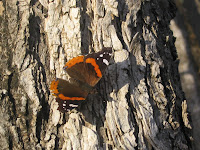My uncle Bob grew up in central Texas, including the town of Rockdale, where he attended high school. He once told me that on hot summer days, he and his buddies would drive north to the little town of San Gabriel to swim there in the San Gabriel River. Eager to see this town that bears the name of the San Gabriel River, Marlene and I drove an hour east of Georgetown on a cloudy spring afternoon
Like many small Texas towns, San Gabriel is now only a remnant of what was once thriving agricultural community. Three Spanish missions were established in the area in the 1730s and 1740s but had a short life and were abandoned by the 1750s. The town of San Gabriel was itself settled around 1843, when Jessee and Peter Mercer built cabins near the river. A few years later, a post office was established and, by 1880, San Gabriel was a real town, with a cotton gin, schools, churches, and businesses. The population grew to 350 residents by 1929. During and after the depression, the town’s population declined; by the late 1950s, only about 75 people remained. The San Gabriel schools consolidated with Thorndale Independent School District in 1960, and the post office closed several years later. About 100 people currently live in and around San Gabriel.
Today, little remains of this once vibrant community on the banks of the San Gabriel River. Marlene and I drove east out of Georgetown on small farm roads and into Milam county. We turned north on FM 486, which crosses the San Gabriel River, then entered San Gabriel. Just off the farm-to-market road, we found the San Gabriel Christian Church, which appears to still have an active congregation. A historical marker at the church says that the church began in the 1840s and was formally organized in 1859; over the years, worship took place in several different structures, before the current church building was constructed in 1924.
Across the street from the church, we found what appears to be the abandoned remains of the old San Gabriel School. Several buildings, now boarded up, once held businesses. A few houses remain.
 |
| Downtown San Gabriel, Texas |
 |
| Abandoned Business in San Gabriel, Texas |














